Club and party drugs are often assumed to be safe, but the truth is they can be just as dangerous, addictive and fatal as any other drug. Ecstasy has long been a popular club drug for the euphoric high and the sense of love and belonging that it gives the user. Ecstasy has also caused a number of club-goers to get sick, become drug addicts and even to die. K
now the truth about this party drug before you make a choice to try it. Whether it’s called ecstasy, Molly or MDMA, this drug is dangerous.
Effects Of Ecstasy
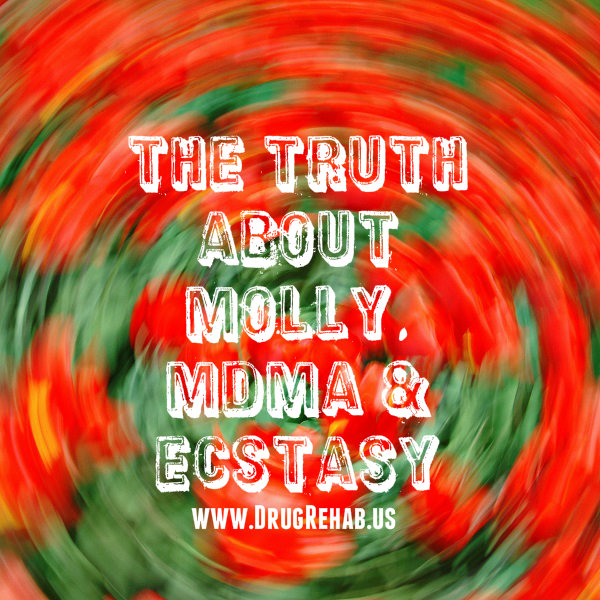 Ecstasy is popular as a party drug because of how it affects mood. Users of the drug report feeling a strong surge of euphoria and a sense of love and affection for other people. This combination makes it desirable at raves, clubs and parties. Ecstasy is able to alter mood because it changes levels of chemicals in the brain. These are dopamine, serotonin and norepinephrine and they are involved in the regulation of mood.
Ecstasy is popular as a party drug because of how it affects mood. Users of the drug report feeling a strong surge of euphoria and a sense of love and affection for other people. This combination makes it desirable at raves, clubs and parties. Ecstasy is able to alter mood because it changes levels of chemicals in the brain. These are dopamine, serotonin and norepinephrine and they are involved in the regulation of mood.
While changing these chemicals in your brain may make you feel happy and loving, the effects can also be negative. Many people experience negative mood changes with ecstasy, including aggression, paranoia, depression and anger. You may also experience sudden swings between feelings of euphoria and happiness and the more negative emotions and moods.
Ecstasy’s Dangerous Side Effects
In addition to the mood swings caused by ecstasy, there are some frightening side effects you can experience when using this drug. Side effects related to mood, including irritability, depression and anxiety, can last for a week or more after you use the drug. Physical effects are also likely and include extreme thirst, dehydration, and decreased libido, lack of appetite, restlessness, trouble sleeping and nausea.
Although not as addictive as some other drugs, ecstasy use can lead to addiction. If you become addicted to this supposedly harmless party drug, you risk being always in recovery for the rest of your life. And while drug and alcohol treatment success is possible, you can never fully escape the chronic illness of addiction.
The Lie About Molly And MDMA
For MDMA and Molly, drug abuse may seem perfectly safe. Clever drug dealers try to sell these products by claiming they are different than ecstasy. They claim that Molly is pure MDMA and that ecstasy is MDMA with dangerous contaminants. The truth is that the three drugs are the same and that you can never know if you are getting a pure drug (which is still very dangerous) or one that has been contaminated with more dangerous substances. No illegal drug is safe, ever.
If you have been tempted to try a party drug, whether it was MDMA, Molly, Ecstasy or any other substance, you should understand the risks. When you learn the truth about these harmful party drugs, you will feel empowered to say no the next time someone offers you a “safe” party high.
What Is The Deadly New Designer Drug: “Smiles”? – Find Out More Now!
02 Apr 2014
The War Against Designer Steroids
Stories of famous athletes caught using performance enhancing steroids have become so numerous as to practically elicit a yawn. But taking steroids to improve muscle size and responsiveness is as unhealthy as it is illegal. Professional athletes take these kinds of drugs intentionally, but others may be taking a form of anabolic steroid without even realizing it.
Identifying Falsely Marketed Steroids
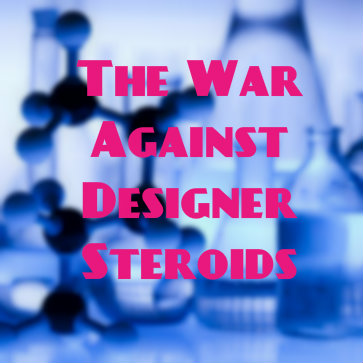 Thousands of American men and women purchase dietary supplements which claim to boost muscle. The supplements claim to be safe and, legally speaking, contain no banned ingredients. However, plenty of these sports supplements contain what are referred to as “designer steroids.”
Thousands of American men and women purchase dietary supplements which claim to boost muscle. The supplements claim to be safe and, legally speaking, contain no banned ingredients. However, plenty of these sports supplements contain what are referred to as “designer steroids.”
Designer steroids, like designer drugs, are man-made substances that mimic the effects of known drugs. These chemical compounds are not identical to a certain illegal substance, but they’re similar enough to yield many, if not all, of the same effects. The benefit to designer steroids? They are not technically illegal so they can be sold with impunity. And many consumers have no idea that what they’re taking is essentially the same as a drug the U.S. has banned.
Designer steroids fall just outside the Drug Enforcement Administration’s (DEA) list of illegal compounds. Each time the DEA adds a new steroid compound to the list designers simply tweak the recipe enough to remain beyond the reach of the law. But a new bill would include more substances and make fighting these drugs easier.
What Is The DEA Doing About It?
It’s called the Designer Anabolic Steroid Control Act. Senator Orrin Hatch of Utah and Senator Sheldon Whitehouse from Rhode Island co-sponsored the bill which aims to close the existing loophole. The Act broadens the power of the DEA by adding 27 new substances to the list of controlled anabolic steroids.
It would also empower the DEA to place newly identified designer steroids on the list on a temporary basis so that swift action could be taken. The substances could then be added permanently to the list of prosecutable substances in due course.
Improving the agility of the DEA is crucial if progress is to be made in turning this problem around. Quick action and certain prosecution are the only things that will deter profiteering from the false marketing of “safe” supplements which, in fact, contain anabolic steroids.
Who’s Helping To Fuel The War Against These Drugs?
Not surprisingly, organizations which deal with the problem of doping and steroid-loaded supplements on a regular basis are one hundred percent behind the new bill. The group which monitors Olympic athletes is just one example of many whose jobs would be made easier if designer steroids were more readily punished.
But even the supplement industry itself has spoken up in favor of the legislation. Representatives of the Council for Responsible Nutrition and the United Natural Products Alliance both publicly supported the move. The integrity of the entire supplement industry is on the line when products are being used to mask the sale of illegal steroids.
The bill will help the DEA keep pace with the makers of these substances. But even as the government strengthens the DEA’s reach in one area, problems in another area are popping up.
A crop of exercise and workout supplements are being laced with compounds quite similar to methamphetamine or amphetamines. People looking for a healthful jolt to rev up their gym time are getting the equivalent of a controlled stimulant drug. This Act does not address the designer stimulant problem. That may require another visit to Capitol Hill.
Read More About Performance Enhancing Drugs-Androgenic Steroids
06 Mar 2014
What Is The Deadly New Designer Drug: “Smiles”?
Smiles is the street name for 2C-I, a potent synthetic hallucinogen that has psychedelic-like effects when ingested. Smiles belongs to the 2C family of compounds which includes another popular synthetic, 2C-B. This class of drugs is closely related to amphetamines, including methamphetamine. Smiles is often sold as a fine white powder or tablet, and is also mixed into candies. It can be snorted, smoked or eaten.
History And Distribution Of 2C-I
2C-I was first synthesized in the 1990s by chemist Alexander Shulgin, who is well known for synthesizing many other popular drugs. Smiles appeared as early as the early 2000’s in the Netherlands as a then-legal alternative to 2C-B, which had just been banned. Smiles was banned shortly after, in 2008, along with other 2C drugs.
The U.S. classified 2C-I as a Schedule I substance (meaning “no accepted medical value” and “high potential for abuse”) in 2012, making it illegal to make, distribute or possess.
The Dangerous Effects Of 2C-I
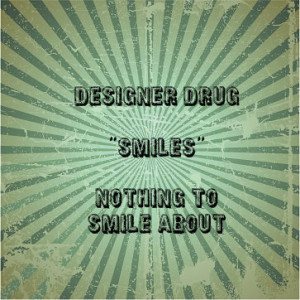 Some compare 2C-I’s effects to a very potent dose of LSD (acid) or MDMA (Molly) because of hallucinations and a feeling of euphoria. This drug, however, appears to be much more dangerous. Side effects include the following:
Some compare 2C-I’s effects to a very potent dose of LSD (acid) or MDMA (Molly) because of hallucinations and a feeling of euphoria. This drug, however, appears to be much more dangerous. Side effects include the following:
- Nausea and vomiting
- Muscle spasms
- Paranoia
- Seizures
- Raised blood pressure
- Kidney failure
What Are The Dangers Of 2C-I?
Unlike the more common hallucinogens, such as LSD and psilocybin (magic mushrooms), which typically do not cause overdoses, 2C-I may cause severe bodily harm, even at small doses. The white powder form of 2C-I is impossible to tell apart from other substances, and it can easily pass off as LSD when mixed into candy or blotting paper, putting casual LSD users at risk of experiencing 2C-I’s more severe side effects, or worse, an overdose. In addition, 2C-I can be difficult to detect by emergency room doctors, with many toxicology tests coming back negative. This could be due, in part, to smiles being laced with other compounds. Like heroin and other synthetics, smiles is notoriously impure. There is currently no established lethal dose of 2C-I, but the drug has been implicated in a number of deaths, both in the U.S. and Europe.
“Smiles” Overdose Tragedies
According to local news reports, in the summer of 2012, 17-year-old Elijah Stai of Park Rapids, Minn., ingested a fatal dose of smiles in a candy bar given to him by a friend. Only an hour later, while hanging out at the local McDonald’s, Stai’s smiles trip took a turn for the worse. His distraught friends and other eyewitnesses describe him acting “possessed”: hyperventilating, making strange sounds and repeatedly hitting his head against the floor. His worried friends took him back home in an attempt to let him calm down and “ride out” the high, but the day ended in tragedy. Less than two hours later, Stai stopped breathing. His story was sadly mirrored by another death in a nearby city just the day before when police found the body of a teen on a sidewalk; he had also suffered a fatal smiles overdose. Police blamed both incidents on a “bad batch” of 2C-I that was circulating on the streets at the time.
The story of the teens serves as a somber reminder of how dangerous synthetic drugs can be. Even if most 2C-I “trips” end without any tragic consequences, there’s no telling how safe the next dose will be, or if it’s even pure 2C-I. Experts are urging extreme caution around these drugs and warn that teens are especially likely to experiment with them.
Read More About The Dangers Of Designer Drugs
17 Oct 2013
You May Think It’s Molly, But It May Not Be
Hospitals face a difficult problem whenever someone comes in to be treated for a Molly overdose. The patient may believe they’ve taken a form of ecstasy, but there is no way to know what the person actually swallowed. There is no “Truth in Labeling Law” to govern illegal drugs, and many think they’ve been using Molly when they’ve really been taking some other highly dangerous substance.
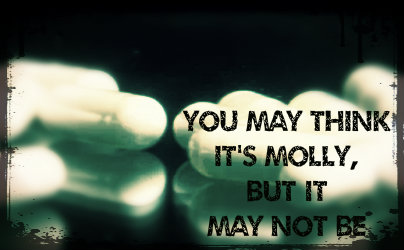
Courtesy of: www.ktsm.com
Molly is the street name for the synthetic drug MDMA. It’s called Molly because of the powder or capsule form that it comes in, as opposed to tabs, and the presumption that the “molecular,” or Molly for short, form is more pure. Synthetic drugs are also sometimes referred to as designer drugs. They are often compounds designed to mimic the effects of traditional drugs like marijuana, LSD or ecstasy, among others. Synthetic marijuana, for example, is sold as K2 or Spice.
Mislabeled And Dangerous Synthetic Designer Drugs
The problem is that you don’t know the person who designed your Molly. The Drug Enforcement Agency regularly tests the drugs it obtains through seizures. Those tests often reveal that pills are mislabeled.
Experts often find methylone in the pills, which is a key component in bath salts, another synthetic drug famous for being unpredictable and causing serious health side effects. In 2012 a man was arrested for importing methylone from China and then selling it to someone as Molly. That person died after using the drug.
Dangerous Side-Effects Of Molly
Molly is a popular drug for young people attending raves, dance clubs and concerts. The drug enhances positive emotions and feelings of bonding with others. However, Molly also increases a person’s heart rate and raises their body temperature, sometimes to extremes. One young man died with a body temperature of 109 after taking Molly. The risks of dehydration are so well known that special booths are often set up at events where Molly is expected to be used.
Symptoms commonly seen in hospitals include agitation, seizures, soaring fever and increased heartbeat. Since there is no way to know for certain what the young person actually ingested, the best hospital staff can do is to manage symptoms while they wait for the effects of the drug to wear off. Hardly reassuring.
Dying After Taking Molly
Over Labor Day weekend 2013 several young people died after taking Molly at various concert venues, with one multi-day concert in New York was shut down due to deaths. Nevertheless, rappers and rock stars continue to sing about the beauties of Molly. And young people continue to swallow whatever they are being told by their idols.
To Read More About Molly’s Dangerous Side-effects On Teens – Click Here
Reporting the news in Mexico can be a deadly occupation, especially for those covering the drug war. But where militant thugs have been successful in stifling the media, they are virtually powerless against those who have taken to social media to “report” the war.
It’s not only Mexican residents caught in the crossfire taking to Twitter, YouTube and Facebook, those across the border in the U.S. are also using social media as a tool. Residents are using social media to protect themselves from the drug cartels that stop at nothing to push their product and protect their turf.
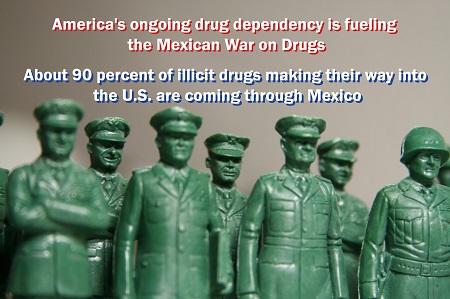 The violence began in earnest when the Mexican president declared war on drugs, but crept up another few notches when two major partnering cartels split and declared war on each other. Since the declarations of war, it is estimated that as many as 100,000 people have been killed and another 30,000 have seemingly vanished into thin air. Many residents try to escape the most violent areas, which has put more than 200,000 in a displaced status.
The violence began in earnest when the Mexican president declared war on drugs, but crept up another few notches when two major partnering cartels split and declared war on each other. Since the declarations of war, it is estimated that as many as 100,000 people have been killed and another 30,000 have seemingly vanished into thin air. Many residents try to escape the most violent areas, which has put more than 200,000 in a displaced status.
Some of the only news sources available now are through Twitter and Facebook. While news footage once came from the major broadcast companies in Mexico, camera phones with crudely edited footage of the war between the government and the cartels is being placed on YouTube instead. Media outlets in the U.S. are also depending on these amateur videos as their go-to source for footage.
America’s ongoing drug dependency is fueling this war. About 90 percent of illicit drugs making their way into the U.S. are coming through Mexico. The biggest cash crop, so to speak, continues to be cocaine.
According to the National Institute on Drug Abuse, nearly 5 million Americans said they had at one point or other abused cocaine. While those numbers pale in comparison to the drug’s peak in 1982 (10.5 million were believed to be using the drug in that year), it’s still enough to fuel a drug war that is taking lives.
Read more: United Nations Leading International War on Drugs
17 Jun 2013
Molly – An Unsuspecting Name for a Potent Drug
Taking the good with the bad is a life lesson that everyone learns at some point. But young people involved in the rave culture are finding that drugs bringing on extremely intense feelings of pleasure have an equally displeasing depressing effect.
The drug, Molly, has a name that sounds innocent enough, but unsuspecting users are devastated by the crash they experience when coming off the high. In some cases, the depressing feelings lead to a near paralyzing state where the user can’t find the mental strength to eat or communicate.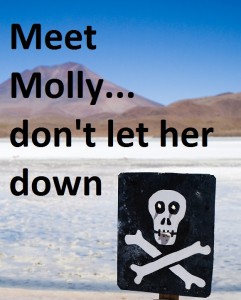
The intense emotional ride and the relatively cheap cost of that ride are helping push the popularity of Molly further every day. The drug is actually the powder or crystal form of MDMA (AKA Ecstasy). The popular drug Ecstasy is actually derived from a variety of drugs, not just MDMA. Molly is a purer form of Ecstasy and actually gets its name from “molecule,” which is representative of its place as the vital ingredient to MDMA.
The DEA has classified Molly as a Schedule I controlled substance due to its addictive nature and because it has not been embraced by the medical community as having any usable characteristics in health care.
Users who take too much of the drug will have a difficult time with temperature regulation and can actually experience hyperthermia, which can lead to liver, cardiovascular and kidney failure.
The current statistics from emergency rooms across the nation don’t indicate that the use of this drug is widespread yet. But the massive growth in its popularity in such a short time has experts concerned – there was an approximate 125 percent growth in the use of the drug between 2004 and 2009.
Continue reading: Understanding the Effects of Substituted Amphetamines
The quest to outlaw legal highs has been described as both a “game of cat and mouse” and “whack-a-mole,” and these descriptions convey the issues faced by law enforcement perfectly. The tricks employed by the illicit chemists enable them to avoid authorities, and it seems that no matter what the government does, loopholes are found. Understanding the techniques used in the manufacture of the drugs and how the chemists manage to avoid even the most recent legislation reveals why designer drugs can be as dangerous (if not more so) as their well-established illegal counterparts.
Altering the Chemical Structure
This is the most commonly used strategy for avoiding existing law. The process is pretty simple: the chemical structure of illegal drugs is what creates their effects, and similar structures are likely to have similar effects. Traditionally, the law bans specific substances, and this means that if the chemical structure is different, the substance isn’t technically illegal. If a law bans a specific substance, all the chemists would have to do is create an alternative formulation to make it legal. This is how the cat-and-mouse chase continues, and, inevitably, the law is a step or two behind the chemists. Until recently, this was the only method the federal government had to combat the constant influx of drugs; a little like trying to stop a swarm of ants by spearing them one by one with a single pin.
Labels
Two of the most famous designer drugs of recent years, “spice” and “bath salts” both used the label “Not for Human Consumption” to avoid legislation. This label allows the substances to legally enter the market without undergoing FDA testing to check for any similarity to illegal drugs. Hand sanitizer, for example, can be abused because it can be up to 60 percent alcohol. However, because it isn’t intended for human consumption, the fact that it contains alcohol isn’t really important. This loophole is commonly exploited by designer drug manufacturers.
New Legislation
In 2012, new rules were introduced that changed the method of combating the spread of designer drugs. Instead of outlawing only specific substances, the new rules include the Federal Analogue Act, which allows substances to be declared illegal if they are structurally similar or produce similar effects to known illegal substances. There is also a provision in the law that allows emergency bans, which can be very useful in reducing the risks associated with untested new chemicals.
The Problems
Although the new laws allow for a much more flexible approach for determining which substances should be illegal, there are still issues with the strategy. For one, it is unrealistic to assume that no new compounds (without similarities to existing controlled substances) could possibly be created in the near future, but the bigger issue is that the definition of “similar” is not set in stone. With no benchmark against which to measure the similarity of substances, prosecuting the drug makers under the new legislation isn’t as simple as it sounds.
A report from the Tampa Bay Times indicates that lawyers aren’t confident in the new legislation because of this vague language. In Florida, the new act has never been used for that reason. The cases that do occur generally boil down to one attorney pointing out the various similarities between the substances, and the other attorney highlighting all of the differences between them.
There is also an additional problem: Under the law, in order to be prosecuted, manufacturers have to be aware that the substances they created were similar to something illegal. This clause is inserted to prevent innocent chemists from being victimized for chance chemical similarity, but it has the potential to be abused by illicit manufacturers. If they make the simple claim that they were unaware of the similarity to an illegal drug, punishing them is made exponentially more challenging.
The Future
Although the new legislation isn’t air-tight, it does represent a positive step forward in controlling designer drugs. It seems reasonable that there will always be manufacturers who exploit loopholes, but as more and more of them are closed, producing anything that is arguably legal will become more difficult.
Substituted amphetamines are a group of chemically related substances that possess a strong chemical resemblance to the manmade stimulant drug amphetamine. Some of these substances-including ephedrine, pseudoephedrine, and cathinone-come from plant sources and predate synthetic amphetamine by thousands of years or more. Others-including methamphetamine and MDMA (Ecstasy)-are synthetic and have only existed for anywhere from decades up to slightly more than a century. Almost all substituted amphetamines produce pleasure and stimulant effects in the central nervous system; to varying degrees, they may also produce hallucinations and increased feelings of connectedness toward others. Side effects common to most of these substances include potentially deadly toxic reactions (overdoses) and long-term risks for drug addiction.



